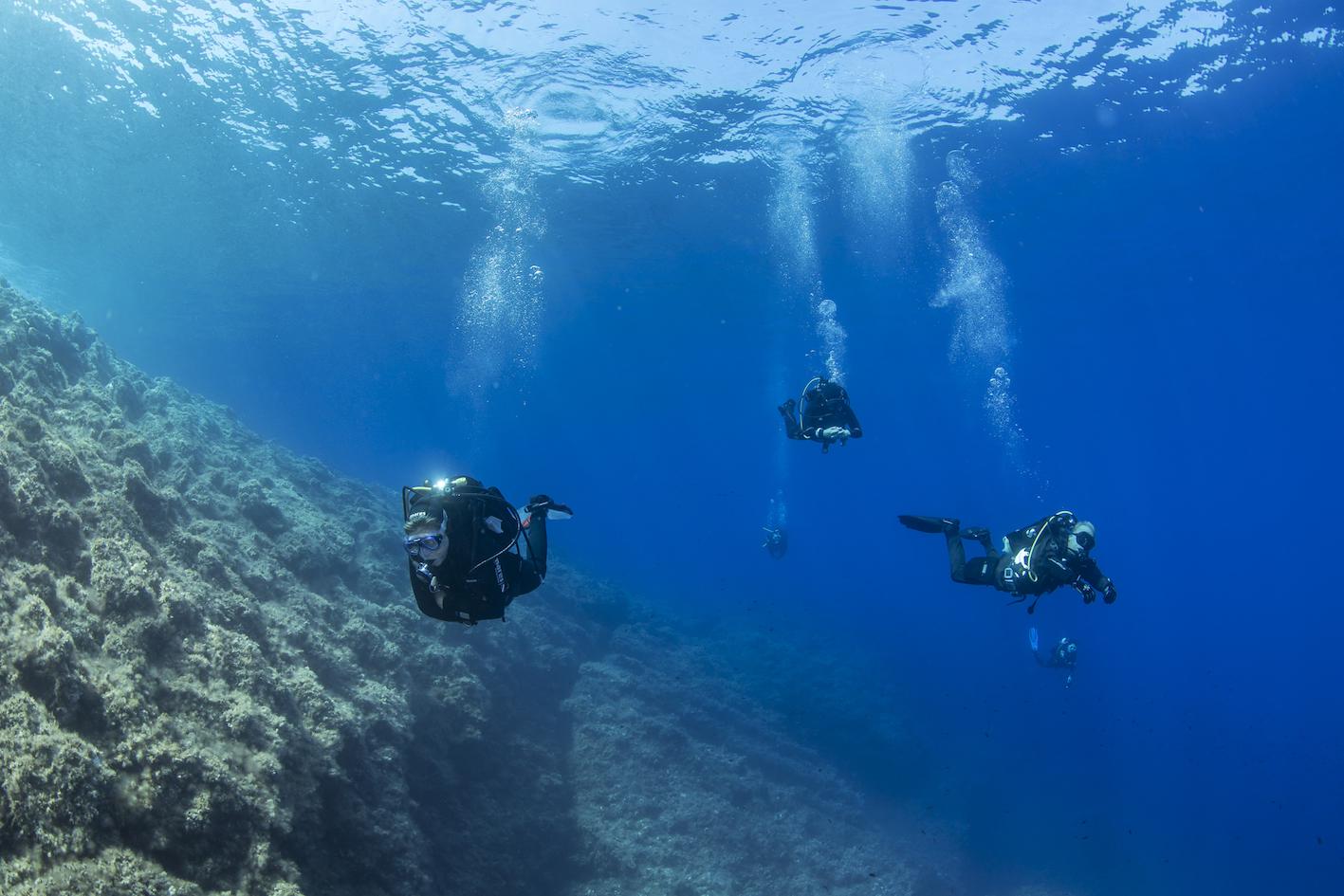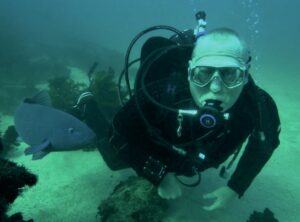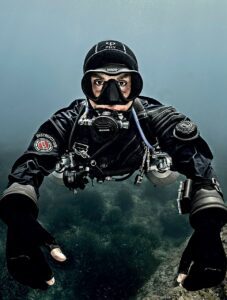Cristian Pellegrini looks at diving and diabetes, and reviews the latest research and guidelines for those suffering from the disease.
For many years, the medical community have advised against diving with diabetes. Diabetes is a disease which affects the endocrine system, the collection of glands that produce hormones regulating your metabolism, growth and development, tissue function, sexual function, reproduction, sleep, and mood, among other things.
The main threat of diabetes is the effect it has on your pancreas, the organ which produces insulin and glucagon. These are the two hormones which balance and maintain your blood glucose (blood sugar). As of 2015, an estimated 415 million people already suffer from diabetes worldwide and by 2040, the number of diabetics is estimated to rise to around 642 million.
Does this mean diabetics are not allowed to dive? Absolutely not!
But let’s run you through important information you should know. Having diabetes means either your pancreas is not producing enough insulin, or the cells of the body are not responding properly to the insulin produced. There are two main types of diabetes:
- Type 1 diabetes entails the pancreas's failure to produce enough insulin, which leads to insulin dependency (needing insulin injections). The cause is currently unknown.
- Type 2 diabetes begins with insulin resistance, a condition in which cells fail to respond to insulin properly, which may also lead to a lack of insulin. This type of diabetes can be controlled by maintaining a healthy diet and by taking oral medication. The most-common cause is an unhealthy lifestyle, excessive body weight and lack of exercise.
The reason why medical experts have advised against diving with diabetes is due to the fragile and potentially life-threatening conditions diabetics may encounter when suffering from high blood sugar (hyperglycemia) or dangerously low blood sugar (hypoglycemia).
Just so you understand, insulin (and physical exercise) lowers your blood sugar, and glucagon (as well as foods with glucose) raises your blood sugar. Diabetics may often suffer from overly high and low sugars, which puts them at a much higher risk of suffering from an accident underwater. This means that diving underwater in a state of hyperglycaemia or hypoglycaemia may lead to loss of consciousness and, in some cases, even death. So naturally, medical experts have raised a red flag when it comes to diabetics diving, especially when their illness is unstable or newly discovered.
Common risks, symptoms and effects of suffering from high and low blood sugars include:
- Hyperglycemia (high blood sugar): extreme thirst, frequent urination, dry skin, hunger, blurred vision, nausea, drowsiness, slow-healing wounds, vomiting.
- Hypoglycemia (low blood sugar): trembling, fast heartbeat, sweating, dizziness, anxiousness, paleness, hunger, weakness/fatigue, headache, fainting.
When in doubt, diabetics must immediately check their blood sugar using a blood glucose monitoring device, and either eat or drink something with sugar when blood glucose is low, or take the appropriate medicine to counteract high blood glucose.
Symptoms and precautions are difficult, if not impossible, to identify and manage underwater, and due to the scope of these potential problems caused by diabetes, diabetics possess a greater threat when it comes to diving safely.
In the past, diving with diabetes was definitely considered inadvisable. Even today, some medical experts strongly disapprove. However, in recent years, many divers with diabetes have successfully proved the medical industry wrong, proving to the community that it is possible to pursue your passion for diving without jeopardising or sacrificing your health and safety – by taking the right precautions.
When diving with diabetes, it is important to know your limits and always speak with professionals to get an objective opinion of your health condition before attempting to dive underwater. No matter how controlled your condition may be, diabetics cannot dive without restrictions. The same applies to people without diabetes, of course, yet diabetics must accept that their risks are higher – even if their diving skills are equal to non-diabetics. Suffering from diabetes should never prevent anyone from exploring the world, but the right safety precautions should always be taken.
The diving and medical community has evolved a great deal. Whereas once suffering from diabetes meant you were banned and forbidden from diving, attitudes have luckily changed.
DAN research on diabetes
Results from research by DAN Europe suggest that to prevent worsening of hypoglycaemia and to correctly interpret hypoglycaemia-like symptoms while diving, diabetic divers could benefit from real-time Blood Glucose (BG) monitoring during their dives. During a study, 26 dives were recorded [with] no statistical difference between the BG recorded every five minutes pre, during and post dives.
Furthermore, this study was a perfect example of how technology can help diabetics increase their dive safety using a CGM Monitor in a waterproof case. In such cases, blood glucose levels are seen in real-time on a display, allowing the diver to continuously check [their] BG.
Another study by the DAN Europe Research Division found similar results, stating diving does not imply significant risk of hypoglycaemia even if the continuous monitoring showed a progressive lowering [of blood glucose levels]. These findings further encourage diabetics to try diving. From the studies conducted by DAN, a general conclusion has been obtained: a real-time continuous glucose monitoring system used by diabetic divers during diving can provide immediate information on blood glucose values and trend, with a significant increase in diving safety and with an increase of sports medicine knowledge and interest in this specific field.
Provided you do not suffer from any long-term complications, diving with diabetes is totally acceptable provided you undergo regular checkups and keep your diabetes well controlled to avoid any potential threats.
Regardless of whether you have diabetes or not, our mission is that everyone succeeds in diving safely, so that we can all be proud and share our passion for exploring the world’s enchanting waters. If you are thinking about diving with diabetes, or know someone who is, take a moment to go through our recommendations.
Recommendations for diving with diabetes
- Speak to a physician and diabetes/diving specialist before attempting to dive.
- Always wear a diabetes bracelet so that fellow divers are aware in case of an emergency.
- Carry oral glucose with you at all times and make sure your buddy is aware and has some too.
- Have a glucagon injection on site (at the surface) in case you lose consciousness.
- Eat food with slow-digesting carbohydrates before diving to ensure a balanced glucose level.
- Measure your blood glucose immediately before and after diving.
- Avoid depths greater than 30 metres – Nitrogen Narcosis can be confused with Hypoglycaemia!
- Avoid diving for longer than 60 minutes.
- Log your dives and take note of your blood sugars for future reference.
- Do not dive in cold waters, strong currents or conditions which demand strenuous activity.
- Ensure you have a stable blood sugar no less than 150 mg/dL (8.3 mmol/L) – with Type 1.
- Consider using a Continuous Glucose Monitoring (CGM) system to check your BG in real-time.
- Stay hydrated and healthy before, during and after diving.
- Remain relaxed and enjoy the experience.
Sources
- Diabetes Atlas
- Diabetes & Diving – DAN Southern Africa
- Diabetes and Recreational Diving: Guidelines for the Future’ Workshop Proceedings 2005, UHMS, DAN
- Scuba Magazine April 2015
- Ask DAN: Diabetes and Scuba Diving 2008
DAN research
- “Continuous real time monitoring and recording of glycaemia during scuba diving: pilot study” – Pieri M, Cialoni D, Marroni A, Undersea Hyperb Med. 2016 May-Jun; 43(3):265-72.
- “A continuous real time monitoring and recording of glycaemia during scuba diving: case report” – Pieri M, Cialoni D, Piacente A, Balestra C, Marroni A. (Poster, 2014).
- “Real-time underwater glycaemia monitoring and recording during scuba diving: update” – Pieri M, Cialoni D, Marroni A (Poster, 2015).
- “Safety of recreational scuba diving in type 1 diabetic patients: The Deep Monitoring programme” – Bonomo M1, Cairoli R, Verde G, Morelli L, Moreo A, Grottaglie MD, Brambilla MC, Meneghini E, Aghemo P, Corigliano G, Marroni A., Diabetes Metab. 2009 Apr;35(2):101-7. doi: 10.1016/j.diabet.2008.08.007. Epub 2009 Feb 28.








